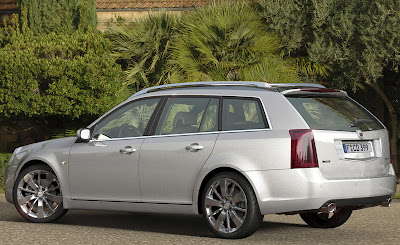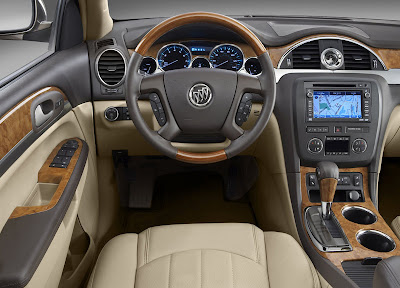Cadillac CTS, 2008




Aggressive and elegant, expressive and sophisticated, the 2008 Cadillac CTS exudes a dramatic design presence. This all-new luxury sedan not only pushes Cadillac's acclaimed design theme higher, it aims to redraw the boundaries of the normally conservative luxury sedan category. Inside and out, the 2008 CTS contradicts many traditional design conventions. CTS' design expresses its serious performance intent, yet also is more elegant and luxurious. It's a sedan in the heart of the luxury market, yet reaches for the charisma of a sports car. CTS is thoroughly new and contemporary, even while it evokes the grandeur of classic Cadillac cars.
Since the inception of the first-generation car in 2002, CTS is about trend-setting design. The edgy form of the CTS initially created controversy. But from the moment it hit the market, its design also attracted lots of buyers, with design often noted as a top reason for purchase. The all-new 2008 edition extends that edgy and contemporary character, with an injection of elegance.
On the exterior, there's no mistaking the five-passenger sedan's stronger stance, thanks to a two-inch wider track. Additionally, the overall shape of the CTS features a faster profile with more rake, coupled with surfaces that add elegance and grace. Borrowing from Cadillac's legendary heritage, design cues include vertically shaped headlights and taillamps, signature light emitting diode (LED) exterior lighting, horizontal spline lines and its dihedral-shaped hood, all highlighted with many bright and jeweled accents.
Just as definitive of CTS' evolution in design is the dramatically new interior. Like the exterior, it expresses luxury and performance themes with appointments that are both purposeful and elegant. Advances in surface development, technology, materials and construction combine to make the CTS cabin a compelling blend of technical sophistication, precise tailoring and luxurious character.
Exterior: sporty sophistication meets substance
Coupled with a new overall shape, the most evolutionary dimension of the 2008 CTS comes in the form of a two-inch wider track as a result of the addition of the new, optional all-wheel-drive configuration. The wider stance gives the new model a more planted, capable and well-grounded appearance that's exemplified by much tighter tire-to-fender relationships.
The wider stance also enables more tumblehome - the vehicle sides are sculpted inward - delivering an appearance of rear-wheel-drive performance with a lower roof line, without compromising headroom or a roomy interior.
Additionally, a wider, tapering sail panel, lower, more sculpted hood, smoother wheel housing lips and a tighter wheel-to-body relationship help communicate the CTS' agility as well as its sophistication and substance.
Seven-spoke, 17-inch wheels or available nine-spoke, 18-inch wheels surround larger high-performance brake calipers and rotors. Both painted and machined finishes are available for the standard 17-inch wheels. The larger, 18-inch wheels are available in a premium multicoat finish or a high-polish finish.
Inspired by Cadillac's landmark Sixteen concept car, the CTS front appearance is immediately recognizable, yet also is new. The large, chrome dual-textured grille is significantly more vertical in shape, and is both aggressive and intricate. A large center-positioned wreath and crest add to the three-dimensional face. The front fascia is balanced with vertically stacked headlamps with bright bezels stacked in a staircase-like array. The lower air intake is flanked on both sides with fog lamps and brake duct intakes.
Side air extractors located forward of the front doors are a modern homage to Cadillac's grand heritage. Additional bright details include chrome molding surrounding the side windows, and three-inch chromed exhaust outlets.
Even on the rear of the car, where many sedans are ordinary, Cadillac designers injected charisma. The vertical taillamps are a Cadillac trademark. The roofline and rear backlight have a coupe-like profile. At the centerline, the decklid carries the angular and directional theme of the front.
Dimensionally, the 2008 CTS is 191.6 inches (4766 mm) long, 72.5 inches (1841 mm) wide and 58 inches (1472 mm) in height. Wheelbase is 113.4 inches (2880 mm) with a front/rear track of 61.8 / 62.0 inches (1575 / 1585 mm).
Interior: performance and elegance combine
The 2008 CTS represents a new design theme for Cadillac interiors, emphasizing technical precision with elegant, hand-crafted details. Dramatically different from the original, the interior design is decidedly more upscale, with added ornamentation, luxury and attention to detail. Strict attention to packaging, premium materials, surface development and comfort combine to meet the discriminating tastes of luxury performance sedan buyers.
Upper instrument panel and door trim surfaces are hand-cut, sewn and wrapped by expert craftsmen. Analog instrumentation that is tightly framed with a compact hood tri-tubular, chromed cluster, is defined by bright accents. An integrated center stack design, with either a satin metallic finish or genuine Sapele wood, blends into the lower instrument panel that sweeps forward and away of front-seat occupants. The hand-assembled center console leads seamlessly into the center stack, providing a sportier "cockpit" feel for the driver and passenger without compromising space.
Heated and ventilated seats incorporate new "thin-seat" technology for maximum occupant comfort and enhanced rear-seat leg, knee and foot room. A signature V-shaped medallion appears as a decorative touch on the backs of the front seats. French stitching is used throughout the interior, including the upper instrument panel, door inserts, seats and the shifter boot.
Clean, white ambient light emitting diode (LED) soft backlighting is positioned in the door pulls, foot wells and recessed between the upper and lower instrument panels. The result is a dramatic effect similar to recessed lighting used in contemporary homes.
The leather-wrapped steering wheel includes standard integrated controls for cruise and audio system.
Inside and out, the 2008 CTS exemplifies an evolution of Cadillac design that achieves a remarkable combination of luxury, technology and performance in a sedan aimed at creating the desire and head-turning quotient normally reserved for sports cars.





















































